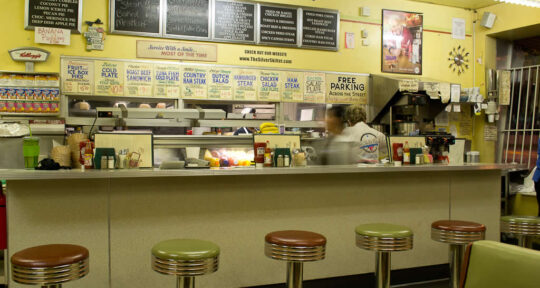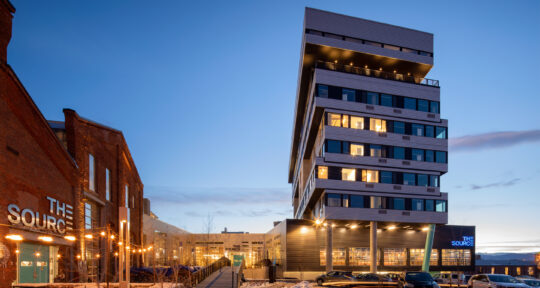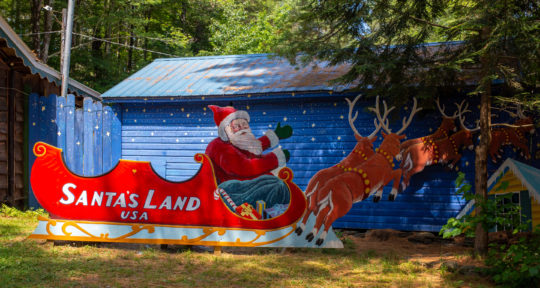For 50 miles, the Cranberry Highway rambles along century-old cranberry beds from Wisconsin Rapids to Warrens in central Wisconsin. With the blazing colors of autumn as a backdrop, I set off to learn the history behind the shiny red, bittersweet berries ubiquitous in traditional Thanksgiving menus.
Indigenous to Wisconsin, cranberries are the state’s leading fruit crop—both in terms of acreage and value—with about 18,000 acres devoted to their production. Wood County, home of the Cranberry Highway, has the greatest amount of acreage dedicated to harvesting the berries.
The Ho-Chunk people (known as the Wisconsin Winnebago until 1993) were the first to harvest the region’s wild berries, using them to enrich pemmican, a meat or fish cake dried in the sun, that served as a major source of sustenance during long winters. Cranberries were also combined with cornmeal into a medicinal poultice for wounds, and the concentrated juice was used to dye textiles.
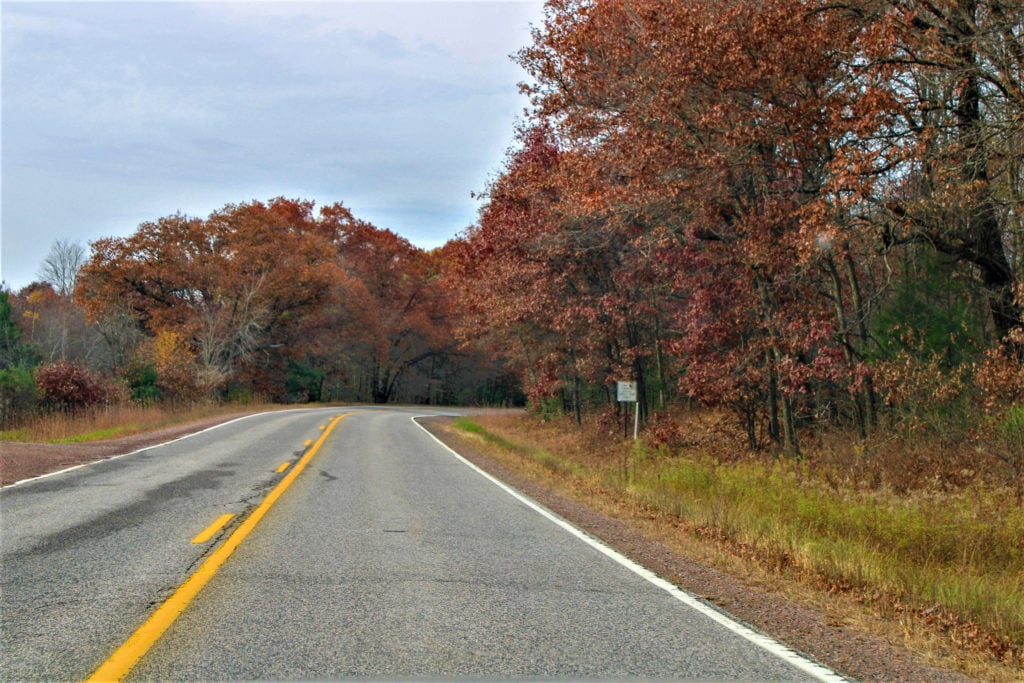
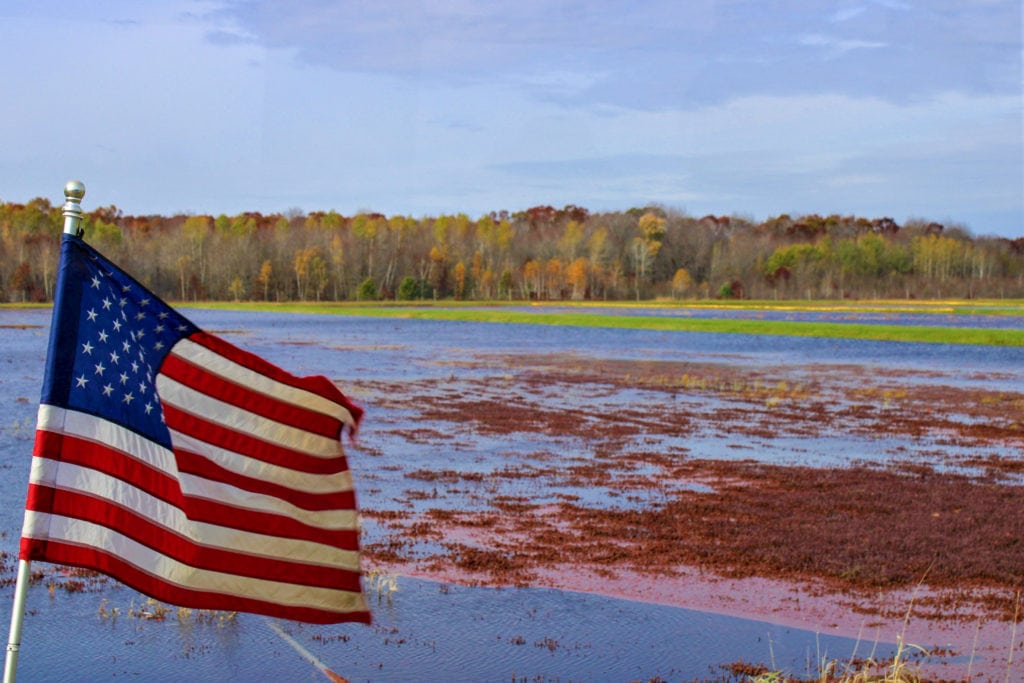
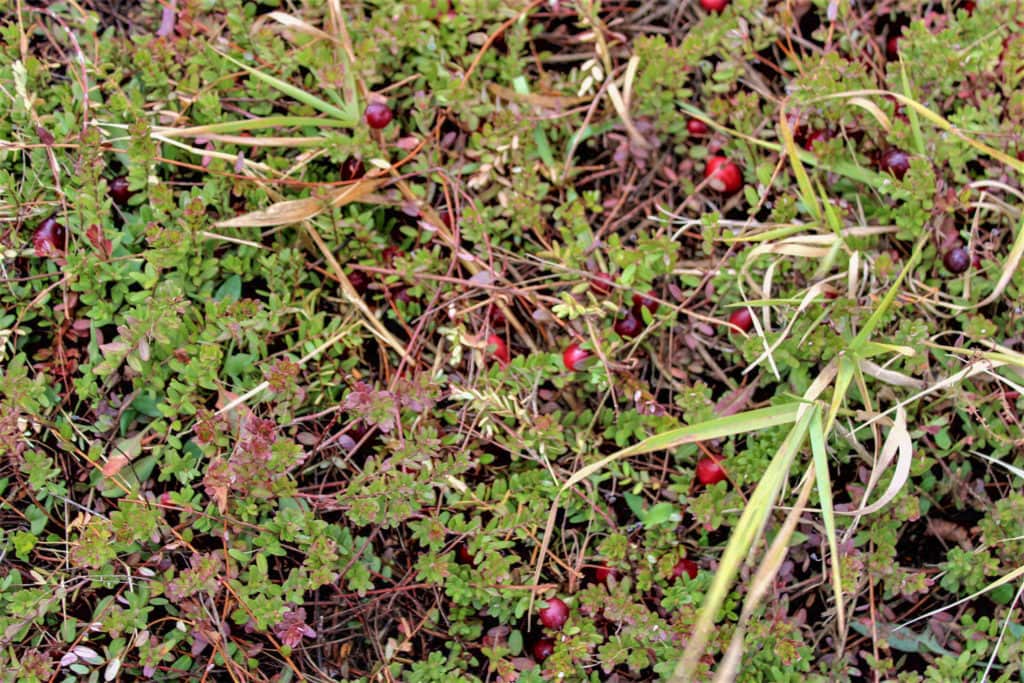
When the first European colonists arrived in the area, they noted the plentiful evergreen vines sprouting berries and embraced them as a highly nutritious food source. German settlers called the fruit “Kranbeere” because the vines’ flowers resembled the sandhill cranes that can still be found grazing in the region’s many marshes. While historians question whether or not turkey was on the table at the first Thanksgiving in 1621, they generally agree that cranberries were an important part of the meal.
Commercial cranberry cultivation began in Wisconsin around 1860, when marshes were developed by digging ditches around the indigenous vines. The Cranberry Highway winds through these historic bogs between Pittsville and Nekoosa, along highways 54, 173, and 13.
Bobbing berries
Just a few miles after I turn off Interstate 95 and began making my way down the Cranberry Highway toward the first stop on my journey, I find myself surrounded by wide marshes and trees with fiery orange leaves at their peak. It’s mid-October and I can already see bright red cranberries corralled into the corners of some of the roadside beds.
Wisconsin farm Glacial Lake Cranberries has been producing cranberries since 1873, when John B. Arpin, a prominent area lumberman, acquired the land. Its vast 6,000 acres are located on what was once the north shore of old Glacial Lake, a large body of water that disappeared thousands of years ago, leaving behind a high water table, sand, and acidic soil—ideal conditions for growing cranberries.
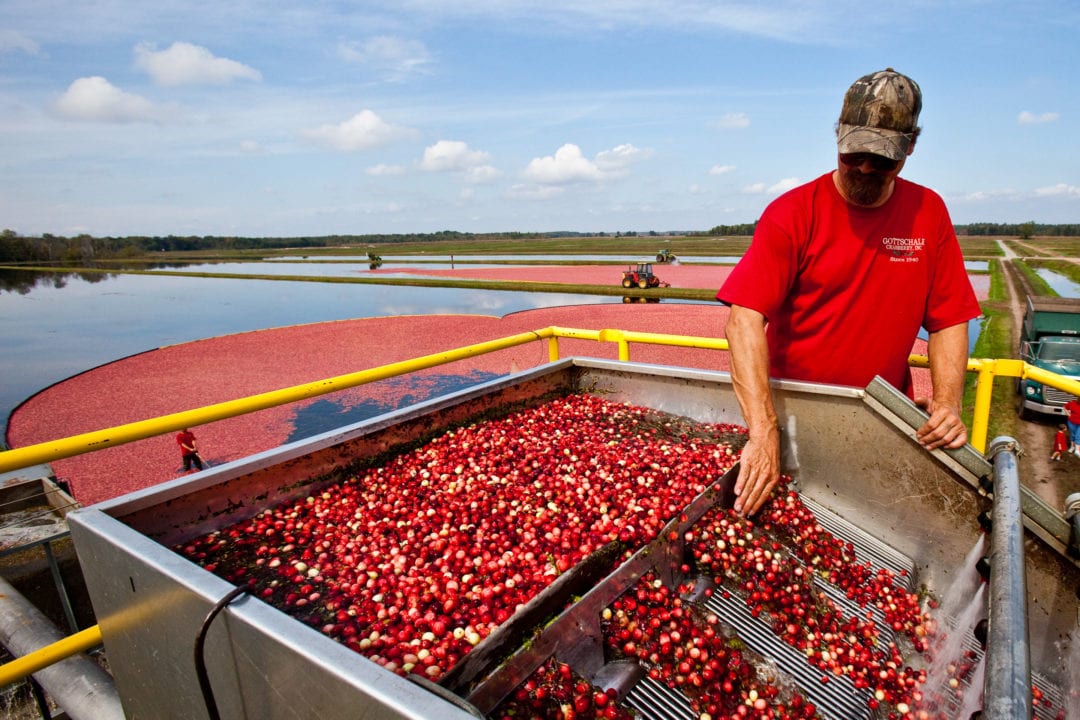
Pioneers in the industry, like Arpin, realized that cranberries had agricultural potential; they built up dikes around the native vines and began cultivating cranberry beds. All of today’s Wisconsin cranberry varieties developed from indigenous vines. T.W. Brazeau and his sons, Bernard and Richard, took over the farm in 1931, and it remains in the family to this day, now owned by T.W. Brazeau’s granddaughter, Mary Brazeau Brown. In the farm’s reception area, Brazeau Brown shares her secret for encouraging her kids to eat their cranberries: She dips them in caramel.
“Cranberries are among the highest of all fruits in antioxidants,” she says, as she passes out the delightful caramel dipped cranberries, which taste like tarter and more flavorful mini caramel apples. “They’re cholesterol free, fat free, low in sodium, and rich in vitamins,” she adds.
Brazeau Brown is also the brains behind Honestly Cranberry’s packaged, unsweetened dried cranberries with no added juices, oils, or preservatives, made from the berries picked right here at Glacial Lake. Phil Brown, Mary’s husband, leads hop-on, hop-off bog tours from a dedicated “Berry Bus.” Some of the vines here are more than 70 years old and still produce berries.
Using water to harvest cranberries originated in Wisconsin in the 1920s. First, the beds are flooded with 6 to 8 inches of water above the low-lying vines. Four interior air chambers act as mini life preservers that force the berries up to the surface, which makes for the fine sight of marshes blanketed with brilliant red, bobbing berries.
For hundreds of years, cranberry harvesters picked the wild berries by hand, and then with special rakes. Today, big harvesting machines gather the cranberries as they make their way through the flooded marshes.
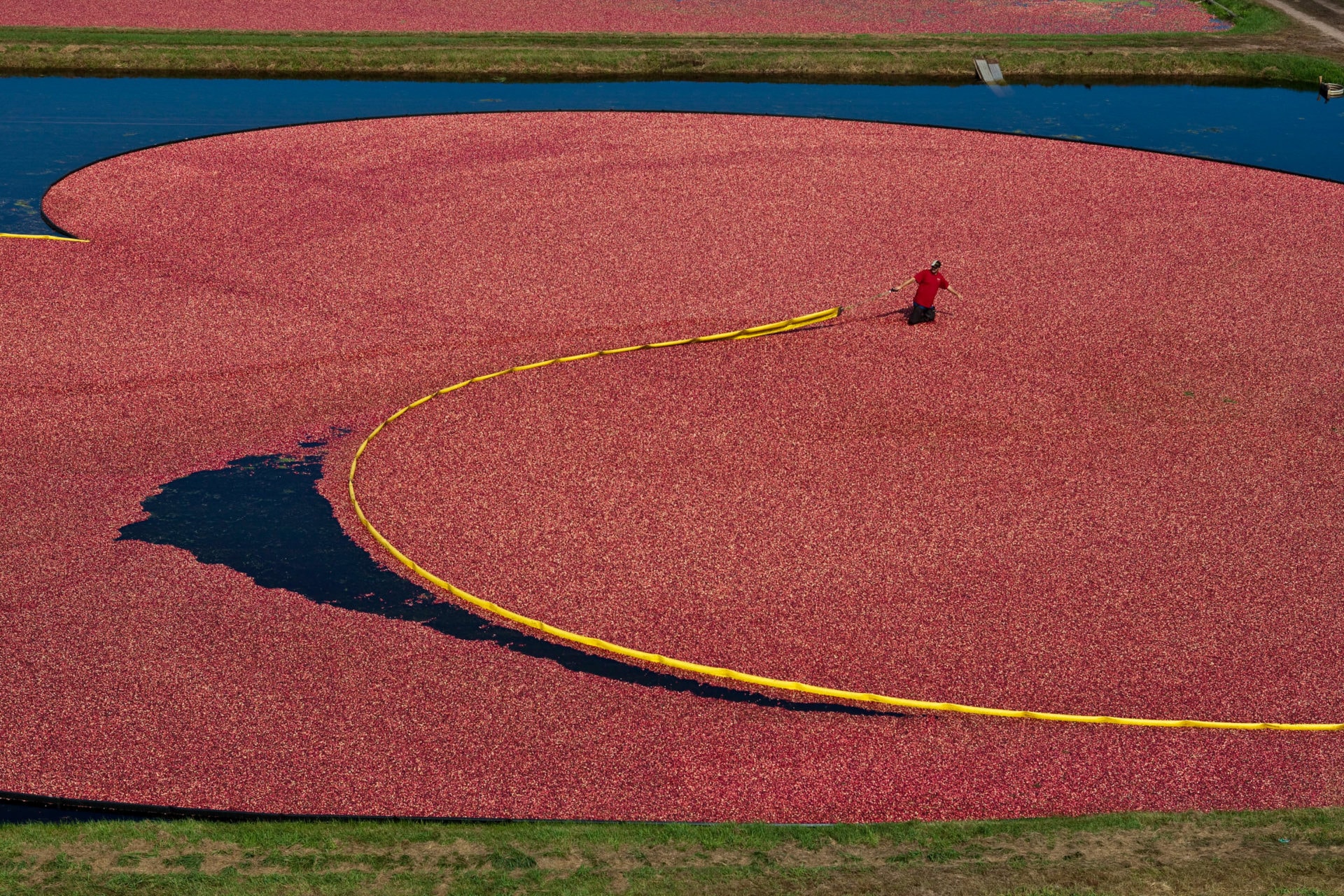
By the pound
I hop back on the Cranberry Highway and backtrack a bit toward the Wisconsin Cranberry Discovery Center, a museum dedicated to showcasing the evolution of the cranberry industry in Wisconsin. Housed in the historic Union Cranberry Warehouse, built in 1900 from locally quarried sandstone, the exhibit here features vintage harvesting tools, a 1914 Ford Model T used to transport cranberries, and a 150-year-old Native American dugout canoe, once used to navigate the wild berry-rich marshes.
A visit to the center begins with a short video that highlights the berry’s history in the region, and should end with a scoop of cranberry ice cream from the museum’s ice cream parlor.
After being schooled on their health benefits, I’m eager to stock up on fresh organic cranberries. At Rubi Reds, a charming cranberry and specialty food market located in downtown Wisconsin Rapids, whole cranberries are sold by the pound. Popular items include sweetened and dried cranberries, chocolate-covered cranberries, cranberry wild rice brats, cranberry pancake syrup, and a selection of cranberry wines sourced from various Wisconsin-based wineries.
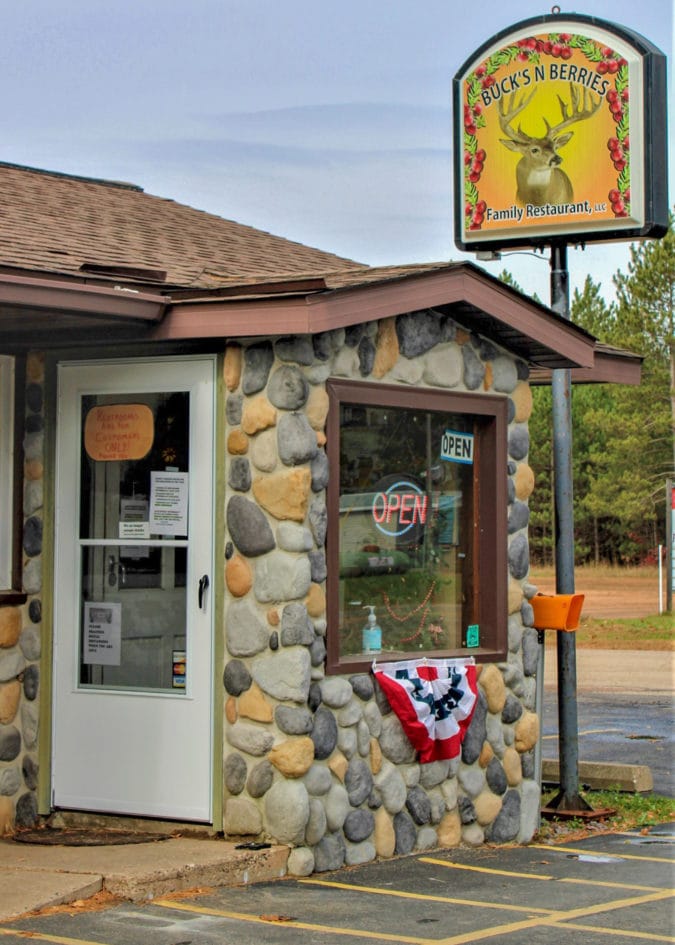
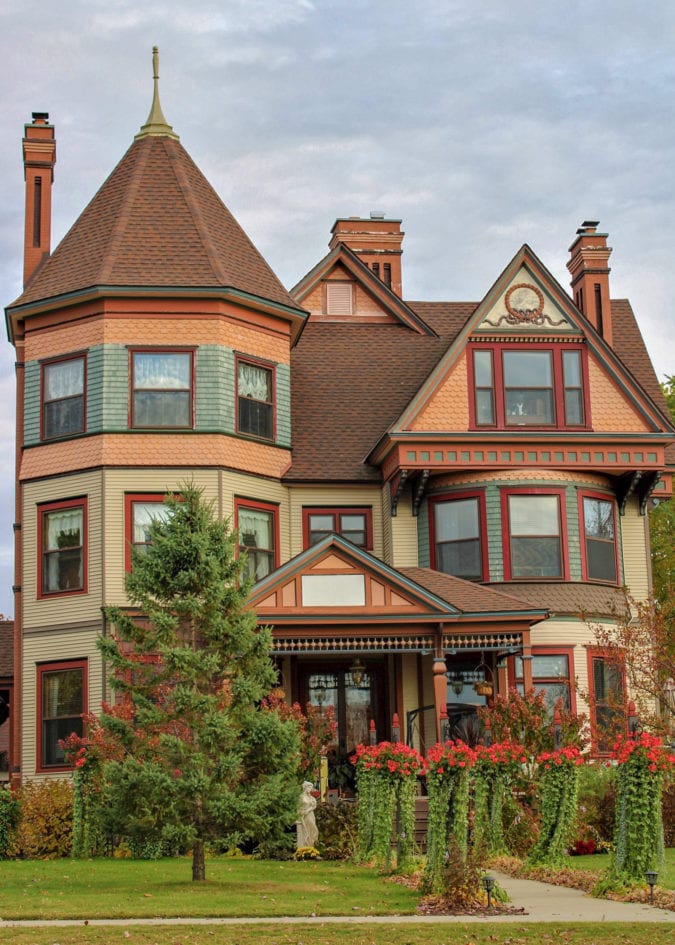
Cranberries and cheese
Perched atop a ridge overlooking the Wisconsin River in Wisconsin Rapids stands the stately Queen Ann Victorian former home of Arpin. Born in Canada in 1826, he was seeking his fortune when he traveled to Wisconsin in 1848 with his twin brother. One of the first to begin logging here, along the banks of the Wisconsin and Mississippi rivers, Arpin sent processed lumber by raft downriver to Dubuque and other markets along the Mississippi.
When logging operations had cut the most usable and profitable timber, Arpin invested in cranberry agriculture. In 1889, he built this three-story mansion with its grand wrap-around porch for his wife Clarice, and named it Le Chateau. Today the mansion is the charming Le Chateau Bed and Breakfast, and my home for the night while I explore cranberry country.
While cranberries might be king, no visit to central Wisconsin is complete without cheese. Dairy State Cheese Company offers more than 200 different types and styles of Wisconsin cheese, and visitors can view master cheese makers in action from two large observation windows. As I hit the road back to Chicago, my trunk is packed to the brim with cranberries, cheese curds, and a wide assortment of specialty aged cheeses—just in time for Thanksgiving and the long winter ahead.
If you go
Central Wisconsin cranberries are harvested from mid-September through mid-November, but call the farm ahead of time to make sure your visit coincides with berry-gathering. Cranberry farms that offer tours include Glacial Lake Cranberries, Wetherby Cranberry Company, and Lake Nokomis Cranberries, which also produces sparkling wine from cranberries grown on-site.

